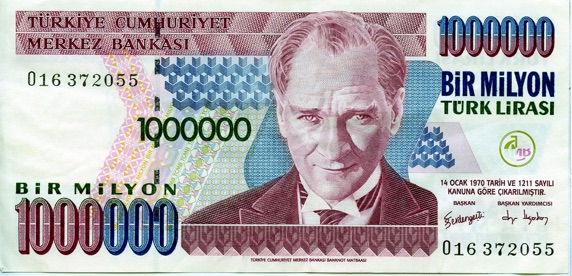Turkish Flying Carpet - 1



A few months ago I asked an acquaintance of mine, who had just returned from Turkey what she thought about her trip.
"Too many ruins", she replied.
She had obviously missed the whole point of her tour. After all, many of the important chapters of ancient civilization took place in Turkey and certainly, what are left of them are just the desolate ruins. But as you wander through the jumble of marble blocks and columns they still convey to you the glories and the achievements of the past. But after days after days sloshing through what were once fabled cities, temples and other edifices, I suppose I could see her point too, especially if you do not know too much of the history of the Western World to start with.
Preneolithic times are hard for me to get excited about. I leave that to the professional archeologists, even though some of their findings are still astounding by themselves. But a lot of interesting stuff has been written on what happened there after the first glimmerings of civilization. In what is now Turkey, you have, successively, the Hittites, the Phrygians, the Persians, the Macedonians under Alexander the Great, the Greeks, the Romans, the Byzantine Empire, the Mongols under Tamerlane, the Ottoman Empire and now, the Turkish republic.
Still, it is useful to remember some important dates to make coherent sense of what you see.
5500 - 3800 BC; Chalcolithic era.
3800 - 3200 BC; Bronze Age
2000 - 1200 BC: The Hittites
1200 - 700 BC: The Phrygians
580 - 30 BC: The Persians
30 BC - 390 AD; The Romans
330 - 1453; The Byzantine Empire
1453 - 1922; The Ottoman Empire
1922 - The Turkish Republic.
And, specifically as it relates, either directly or indirectly to Constantinople:
313 AD, the Roman Emperor Constantine embraced Christianity. He was the first Roman emperor to do so.
324 AD, Emperor Constantine moved the capital of the Roman empire to Constantinople. That was the beginning of the Eastern Roman Empire.
410 AD, Rome was attacked and fell to the Visigoths. This was a major landmark in the decline and fall of the Roman Empire. The Western Roman Empire succumbed to the Goths and Vandals in the 5th century. Constantinople then became the center of the Byzantine Empire.
570 AD, in the Arabian city of Mecca, Muhammad was born.
622 AD, Muhammad and his followers fled to Medina. This event is called the Hirja and marks the beginning of the Islamic calendar.
April 12, 1204. Instead of going to Jerusalem to recapture the city from Saladin, the Crusaders of the Fourth Crusade went north and besieged, captured and looted Constantinople2.
May 29, 1453, Sultan Mehmet II, who was only 21 at that time, breached the city walls of Constantinople and captured the city. That was the end of the Byzantine empire and the beginning of the Ottoman Empire.
1922, Collapse of the Ottoman Empire; creation of the Turkish Republic.
And as for the present. I am reminded of a story that Behlül Dündar, our guide, told us in his introduction to Turkey:
A woman of twenty is like Africa; only half discovered.
A woman in her thirties and forties is like Europe; fully discovered and knowing of all the pleasures.
A woman in her fifties is like Russia; everybody knows about her; nobody wants her.
A woman in her sixties is like Turkey; great history; no prospects.
When we were there the Turkish Lira rate was 1,360,000 to a US$.

This 1,000,000 Turkish lira was worth slightly less than one US$. (3)
We were instant millionaires with just the spare change in our pocket. Hotel, food, and local transportation were inexpensive. You just have to watch the zeroes on your notes when you pay, although a number of times I have received my money back when I gave them a note with one more zero more than I intended. Especially away from places where tourists congregate. Nice people.
Arkadaşim - You are my friend.
However, friendship only goes so far. If you look and act as a tourist in the tourist haunts, you are still their friend, but you will definitely be charged more. And they may forget that the bill you proffered had one too many zeros. The restaurants are notorious, especially the fish restaurants in the Kumkapi area.. Well, this happens regularly to us in all over Europe--, so I always look at my restaurant bill very carefully. After all, what are tourists for; they are just walking cash cows.
In one hotel we saw their rates displayed. For each class of room they had three rates; the cheapest one for local guests, the higher priced one for Turks from out of the area, and the super-higher prices for the foreign tourist, which was more than double the cheapest rate. Usually this information is not shown.
1: The picture of the Aya Sophia above was taken by Jerzy Kociatkiewicz and published Wikipedia Commons.
2: For three days the Crusaders murdered, raped, and looted the city on an indescribable scale. Even 800 years later, Pope John Paul II twice expressed sorrow for these events. These Crusaders were Latin soldiers who were supposed to liberate Jerusalem from Saladin, but instead sailed northwards from Venice to sack the city of fellow Christians and to enrich themselves. Although the Greeks subsequently retook the city and restored the Byzantine Empire, their power had been seriously weakened.
3: This was in 2002. In July 2012, the sum of 1,000,000 Turkish Lira would be equivalent to US$ 553,100



